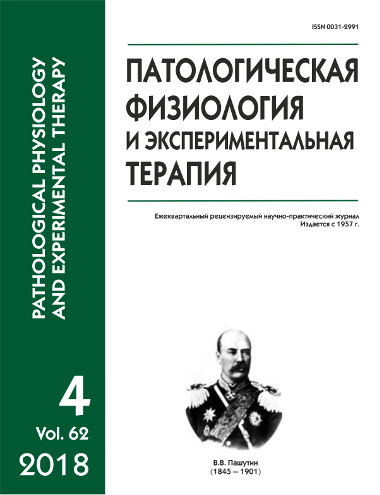Hyperhomocysteinemia and chronic kidney disease
DOI:
https://doi.org/10.25557/0031-2991.2018.04.195-201Keywords:
Hyperhomocysteinemia, chronic kidney disease, nitrative stress, oxidative stress, gomocysteinilation, hypomethylation, endoplasmic reticulum stressAbstract
Hyperhomocysteinemia (HHcy) is an independent risk factor for cardiovascular disease and the direct cause of renal injury in patients with chronic kidney disease (CKD). This review considers the potential mechanisms of homocysteine (Hcy) metabolism disorders, and pathogenesis of molecular and cellular damage mediated by hyperhomocysteinemia (ННсу).Published
2018-11-21
Issue
Section
Reviews
How to Cite
[1]
2018. Hyperhomocysteinemia and chronic kidney disease. Patologicheskaya Fiziologiya i Eksperimental’naya Terapiya (Pathological physiology and experimental therapy). 62, 4 (Nov. 2018), 195–201. DOI:https://doi.org/10.25557/0031-2991.2018.04.195-201.






